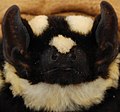GLAM/Newsletter/August 2013/Contents/Open Access report
|
Open Access at Wikimania 2013 & 2014 and on the Main Pages; New mailing list

Open Access at Wikimania
Wikimania 2013 in Hong Kong was the largest real-life gathering of WikiProject Open Access so far, with about one third of its current members attending. Their main contribution to the Wikimania program was a dedicated panel that followed up on a similar one organized at an Open Access meeting in June in Geneva and addressed past, present and potential future interactions between the Open Access and Wikimedia communities. That included, for instance, the idea of an Open Access Button (see below) or that of signalling to Wikipedia readers and editors how openly a cited references is actually available (details). Naturally, Open Access to the scholarly literature was also touched upon in other sessions (e.g. the Science GLAM session or the multimedia roundtable) as well as at WikiSym, which was held in Hong Kong too this year, right before Wikimania.
At the Wikimania closing ceremony, the organizers of next year's Wikimania London announced that outreach to the Open Access community would be one of the central themes of the event. To coordinate activities around that, Stuart Lawson was designated as community liaison, and a project page set up for others to chime in.
Open Access Button
The OA Button is a browser-based tool currently under development which aims to track every time someone is denied access to a scholarly article (explained further in this blog post), and help people find open access versions instead. They are hoping to integrate this with Wikipedia somehow. A hackathon is taking place in London on 7-8 September.
Open Access puts new species on Wikimedia Main Pages
On August 15, a new mammalian species was formally described in the open-access journal ZooKeys: Bassaricyon neblina, the "olinguito". On the same day, Wikipedia articles on the subject had been started in eight languages, four of which displayed the news on their main pages: Catalan, English, Portuguese and Russian, with an article on the Polish Wikinews completing the picture. By now, the article exists in over 40 languages and has been featured – with image – on the main pages of multiple Wikipedias (as, ca, en, es, fi, fr, he, hu, in, ms, nl, pt, ru, sv, ta, tl, uk, zh) and of Wikispecies, with additional entries in Wiktionaries (en, fr), and Wikinews (eo).
Few newly described species (or taxa more generally, for that matter) receive that much attention from the Wikimedia community – other examples include the frog Paedophryne amauensis (30 Wikipedia languages) or the chameleon Brookesia micra (27) – but those who do have usually been described in open-access journals. Overall, 20 files taken directly or adapted from the original research article about the "olinguito" are available on Commons, of which 14 have been used a total of 112 times. This is the kind of reuse of open-access materials that is central to the Signalling OA-ness initiative mentioned above, as it would not be possible with articles that are simply free to read, or even locked behind a paywall, instead of being available for free under a license that allows for images to be uploaded to (and remain on) Wikimedia Commons.
New mailing list
Since August 28, a public mailing list exists to help coordinate activities at the interface between Wikimedia and Open Access. It can be reached via https://lists.wikimedia.org/mailman/listinfo/openaccess .
Open Access Media Importer
The following represents a selection of the 592 files files that have been uploaded by the Open Access Media Importer this month, bringing the total to over 13,500. If you can think of wiki pages where these files could be useful, please put them in there or let us know.
Open Access File of the Day
The following files have been featured as Open Access File of the Day this month:
-
August 31: map of snakebites
-
August 30: Alburnoides fasciatus , a Turkish fish
-
August 29: Badister neopulchellus, a beetle
-
August 28: Antipathozoanthus hickmani, a Zoantharia
-
August 27: fibrous papule on the nose
-
August 26: The lizard Euspondylus spinalis
-
August 25: Distal phalanx of Orrorin
-
August 24: Flower of the orchid Bulbophyllum bicoloratum.
-
August 23: The moth Synanthedon andrenaeformis.
-
August 22: break in hair due to tricho-hepato-enteric syndrome
-
August 21: holotype of Phyllodiscus semoni
-
August 20: British zoologist Oldfield Thomas
-
August 19: An oral rumble sound of an Asian elephant, visualized with an acoustic camera.
-
August 18: The holotype of Microraptor gui.
-
August 17: In the Yanachaga–Chemillén National Park in Peru.
-
August 16: Elimia variata.
-
August 15: Bassaricyon neblina, whose description was published earlier today.
-
August 14: Histology of a xanthoma.
-
August 13: Species in the moth genus Schacontia.
-
August 12: A hamster walking.
-
August 11: A 3rd instar larva of Dunama jessiebarronae.
-
August 10: nostrils of the bat Niumbaha superba
-
August 9: MRI of the sea urchin Psammechinus miliaris
-
August 8: symptoms of Naxos syndrome
-
August 7: Helluomorphoides praeustus bicolor.
-
August 6: Tursiops australis.
-
August 5: Piranga ludoviciana vocalizations
-
August 4: Phelsuma ornata
-
August 3: Calamaria gervaisi
-
August 2: Fukuia multistriata.
-
August 1: the orchid bee Euglossa villosa
| Home | About | Archives | Subscribe | Suggestions | Newsroom |





























